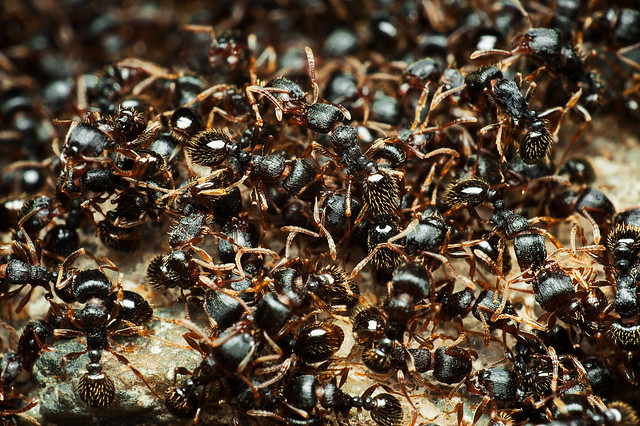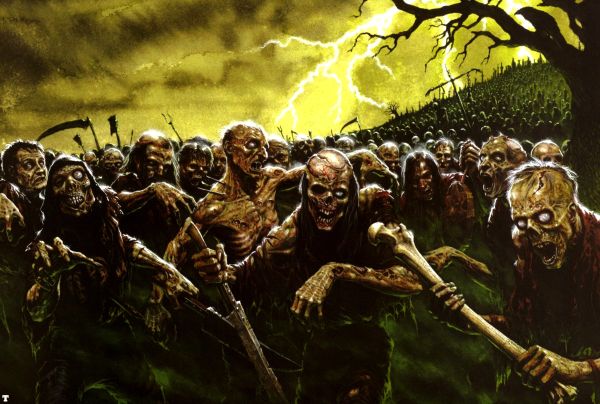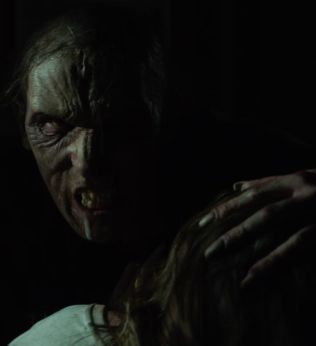Ash Goblins
The masterly Matt Jackson continues to post captivating CollabDungeons. Numbers two and three beg to be admired and adapted into adventures. When Matt posted the first CollaboDungeon, I imagined it as one of several tombs now lost in some remote wilderness region. Then, I wrote this:
For centuries, persons of wealth, power, and achievement sought to be buried in the wide, winding valleys near the wooded frontier of the kingdom. The villages nearest to the frontier adopted various funerary specialties. The coffinmakers here, the masons there, the mourners elsewhere, and so forth. Representatives from each village, elected by their constituents, formed the Mortuary Moot, a rowdy assembly of leaders who met regularly to debate and settle disputes related to the economic governance of the region. The people prospered until Mount Beinn, looming on the eastern horizon, roared back to life. Enormous clouds of volcanic ash rushed down the valleys, blasting the forests away and burying most of Mortuary Moot under yards of debris. Thousands died. In the aftermath, evil humanoids from the Wilderlands ventured into the frontier, killing or driving away those who survived Beinn’s fury.

In recent years, baronial mayors closest to what had been Mortuary Moot have increasingly sought to reclaim the devastated region. To this end, the mayors have made it clear that they welcome adventurers who seek fame and fortune. With sword, spell, and stealth, those adventurers may drive back the hordes of evil humanoids that plague the region, making it possible for the baronial mayors to send soldiers and settlers back into the frontier. Among the most tempting targets drawing adventurers into the area are the tremuli, the numerous artificial hills under which persons of wealth, power, and achievement were buried. Who knows what treasures wait the next intrepid band of would-be tomb robbers?
I like this idea. It could work its way into a sort of Indiana Jones meets the Magnificent Seven meets Mad Max. The PCs would try to recover lost artifacts while avoiding roaming bands of savages while helping protect the re-establishment of civilization while slowly discovering sinister forces working to exploit, destroy, enslave, et cetera. I wonder if I could talk Matt into doing a blighted wilderness map suitable for a starting campaign location? Perhaps if I threaten him with ash goblins?
Ash goblins are small, murderous humanoids that lurk in volcanic regions. They appear much like normal goblins, albeit with gray flesh and small, close-set eyes. Ash goblins tend to be smarter and more organized than their more common relatives.
Ash Goblin
Small humanoid (goblinoid), lawful evil
Armor Class 13 (leather armor)
Hit Points 18 (4d6+4)
Speed 30 ft., burrow 15 ft.
STR 10 (+0), DEX 14 (+2), CON 13 (+1), INT 8 (-1), WIS 11 (+0), CHA 9 (-1)
Skills Stealth +4, Survival +2
Damage Resistances fire
Senses darkvision 30 ft., tremorsense 60 ft., passive Perception 10
Languages Common, Goblin, Ignan
Challenge 1/2 (100 XP)
Hold Breath. The ash goblin can hold its breath for 15 minutes.
Nimble Escape. The ash goblin can take the Disengage or Hide action as a bonus action on each of its turns.
Actions
Shortsword. Melee Weapon Attack: +4 to hit, reach 5 ft., one target. Hit: 5 (1d6+2) piercing damage.
Javelin. Melee or Ranged Weapon Attack: +2 to hit, reach 5 ft. or range 30/120 ft., one target. Hit: 3 (1d6) piercing damage.



